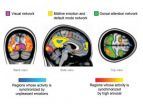(Press-News.org) A new type of male contraceptive could be created thanks to the discovery of a key gene essential for sperm development.
The finding could lead to alternatives to conventional male contraceptives that rely on disrupting the production of hormones, such as testosterone and can cause side-effects such as irritability, mood swings and acne.
Research, led by the University of Edinburgh, has shown how a gene – Katnal1 – is critical to enable sperm to mature in the testes.
If scientists can regulate the Katnal1 gene in the testes, they could prevent sperm from maturing completely, making them ineffective, without changing hormone levels.
The research, which is published in the journal PLoS Genetics, could also help in finding treatments for cases of male infertility, when malfunction of the Katnal1 gene hampers sperm development.
Dr Lee Smith, Reader in Genetic Endocrinology at the Medical Research Council Centre for Reproductive Health at the University of Edinburgh, said: "If we can find a way to target this gene in the testes, we could potentially develop a non-hormonal contraceptive.
"The important thing is that the effects of such a drug would be reversible because Katnal1 only affects sperm cells in the later stages of development, so it would not hinder the early stages of sperm production and the overall ability to produce sperm.
"Although other research is being carried out into non-hormonal male contraceptives, identification of a gene that controls sperm production in the way Katnal1 does is unique and a significant step forward in our understanding of testis biology."
Scientists funded by the Medical Research Council found that male mice, which were modified so they did not have the Katnal1 gene, were infertile.
Further investigation showed that this was because the gene was needed to allow the sperm to develop and mature.
The researchers showed that Katnal1 was needed to regulate a scaffolding structure, known as microtubules, which forms part of the cells that support and provide nutrients to developing sperm.
Break down and rebuilding of these microtubules, enable the sperm cells to move within the testes as they mature. Katnal1 acts as the essential controller of this process.
###
Notes to editors
Medical Research Council (MRC): For almost 100 years the MRC has improved the health of people in the UK and around the world by supporting the highest quality science. The MRC invests in world-class scientists. It has produced 29 Nobel Prize winners and sustains a flourishing environment for internationally recognised research. The MRC focuses on making an impact and provides the financial muscle and scientific expertise behind medical breakthroughs, including one of the first antibiotics penicillin, the structure of DNA and the lethal link between smoking and cancer. Today MRC funded scientists tackle research into the major health challenges of the 21st century www.mrc.ac.uk.
Gene discovery points towards new type of male contraceptive
A new type of male contraceptive could be created thanks to the discovery of a key gene essential for sperm development
2012-05-28
ELSE PRESS RELEASES FROM THIS DATE:
Drug allergy discovery
2012-05-28
A research team led by the University of Melbourne and Monash University, Australia, has discovered why people can develop life-threatening allergies after receiving treatment for conditions such as epilepsy and AIDS.
The finding could lead to the development of a diagnostic test to determine drug hypersensitivity.
The study published today in the journal Nature, revealed how some drugs inadvertently target the immune system to alter how the body's immune system perceives it's own tissues, making them look foreign.
The immune system then attacks the foreign nature ...
Beetle-infested pine trees contribute to air pollution and haze in forests
2012-05-28
The hordes of bark beetles that have bored their way through more than six billion trees in the western United States and British Columbia since the 1990s do more than kill stately pine, spruce and other trees.
Results of a new study show that these pests can make trees release up to 20 times more of the organic substances that foster haze and air pollution in forested areas.
A paper reporting the findings appears today in the journal Environmental Science & Technology, published by the American Chemical Society.
Scientists Kara Huff Hartz of Southern Illinois University ...
Feeling strong emotions makes peoples' brains 'tick together'
2012-05-28
Experiencing strong emotions synchronises brain activity across individuals, research team at Aalto University and Turku PET Centre in Finland has revealed.
Human emotions are highly contagious. Seeing others' emotional expressions such as smiles triggers often the corresponding emotional response in the observer. Such synchronisation of emotional states across individuals may support social interaction: When all group members share a common emotional state, their brains and bodies process the environment in a similar fashion.
Researchers at Aalto University and ...
Dramatic increase in fragility fractures expected in Latin America
2012-05-28
The International Osteoporosis Foundation (IOF), in cooperation with medical and patient societies from throughout Latin America, has today published a landmark report which compiles osteoporosis-related data on 14 countries and the region as a whole. The report shows that fragility fractures due to osteoporosis are predicted to more than double in some countries in the coming decades.
Osteoporosis, which literally means 'porous bones', is a disease which causes bones to become fragile and more likely to break. Older adults, and post-menopausal women in particular, are ...
In Brazil number of hip fractures expected to increase 32 percent by 2050
2012-05-28
A new Audit report on fragility fractures, issued today by the International Osteoporosis Foundation (IOF), predicts that Brazil will experience an explosion in the number of fragility fractures due to osteoporosis in the coming decades.
Osteoporosis, a disease which weakens bones and makes them more likely to fracture, is thought to affect around 33% of postmenopausal women in Brazil. Fractures due to osteoporosis mostly affect older adults, with fractures at the spine and hip causing the most suffering, disability and healthcare expenditure.
Currently, about 20% ...
Food, water safety provide new challenges for today's sensors
2012-05-28
Sensors that work flawlessly in laboratory settings may stumble when it comes to performing in real-world conditions, according to researchers at the Department of Energy's Oak Ridge National Laboratory.
These shortcomings are important as they relate to safeguarding the nation's food and water supplies, said Ali Passian, lead author of a Perspective paper published in ACS Nano. In their paper, titled "Critical Issues in Sensor Science to Aid Food and Water Safety," the researchers observe that while sensors are becoming increasingly sophisticated, little or no field ...
Exotic particles, chilled and trapped, form giant matter wave
2012-05-28
Physicists have trapped and cooled exotic particles called excitons so effectively that they condensed and cohered to form a giant matter wave.
This feat will allow scientists to better study the physical properties of excitons, which exist only fleetingly yet offer promising applications as diverse as efficient harvesting of solar energy and ultrafast computing.
"The realization of the exciton condensate in a trap opens the opportunity to study this interesting state. Traps allow control of the condensate, providing a new way to study fundamental properties of light ...
Healing the voice: New American Chemical Society video on synthetic vocal cords
2012-05-28
WASHINGTON, May 24, 2012 — An effort to develop synthetic vocal cords to heal the voices of people with scarred natural vocal tissues is the topic of the latest episode of the American Chemical Society's (ACS') Bytesize Science series. The video is available at www.BytesizeScience.com.
Filmed in the lab of 2012 ACS Priestley Medalist and David H. Koch Institute Professor Robert S. Langer, Ph.D., at the Massachusetts Institute of Technology, the video highlights the development of a flexible polymer material that mimics the traits of human vocal cords. The video begins ...
London researcher calls for new approach to regulating probiotics
2012-05-28
LONDON, ON – In today's Nature scientific journal Dr. Gregor Reid, Director of the Canadian R&D Centre for Probiotics at Lawson Health Research Institute and a scientist at Western University, calls for a Category Tree system to be implemented in the United States and Europe to better inform consumers about probiotics.
Globally, the market for probiotics (beneficial microorganisms) exceeds $30 billion; however, consumers have little way of knowing which products have been tested in humans and what they do for health. Furthermore, the regulatory system in the US maintains ...
Exercise does not improve lipoprotein levels in obese patients with fatty liver disease
2012-05-28
New research found that moderate exercise does not improve lipoprotein concentrations in obese patients with non alcoholic fatty liver disease (NAFLD). Results published in the June issue of Hepatology, a journal of the American Association for the Study of Liver Diseases, report that moderate physical activity produces only a small decrease in triglyceride and alanine transaminase (ALT) levels.
Obesity is a rampant health concern worldwide. In fact, the World Health Organization (WHO) reported in 2008 that 1.5 billion people, age 20 and older, were overweight, and of ...
LAST 30 PRESS RELEASES:
Deep neural networks enable accurate pricing of American options under stochastic volatility
Collective risk resonance in Chinese stock sectors uncovered through higher-order network analysis
Does CPU impact systemic risk contributions of Chinese sectors? Evidence from mixed frequency methods with asymmetric tail long memory
General intelligence framework to predict virus adaptation based on a genome language model
Antibiotic resistance is ancient, ecological, and deeply connected to human activity, new review shows
Vapes, pouches, heated tobacco, shisha, cigarettes: nicotine in all forms is toxic to the heart and blood vessels
From powder to planet: University of Modena engineers forge a low-carbon future for advanced metal manufacturing
Super strain-resistant superconductors
Pre-school health programme does not improve children’s diet or physical activity, prompting call for policy changes, study finds
Autumn clock change linked to reduction in certain health conditions
AI images of doctors can exaggerate and reinforce existing stereotypes
Where medicine meets melody – how lullabies help babies and parents in intensive care
We may never be able to tell if AI becomes conscious, argues philosopher
AI video translation shows promise but humans still hold the edge
Deep ocean earthquakes drive Southern Ocean’s massive phytoplankton blooms, study finds
Without campus leftovers to pick through, the beaks of this bird changed shape during the pandemic
High-dose antibiotic does not reduce mortality in tuberculous meningitis
How many insects fly in the sky above the USA?
Could cheese protect your brain health?
Who faces more difficulty recovering from stroke?
Colliding galaxies create the brightest, fastest growing black holes at their center
New BrainHealth research reveals tradeoffs on sleep with cannabis use for chronic pain
Aging-US now on ResearchGate, enhancing visibility for authors and readers
'Molecular glue' stabilizes protein that inhibits development of non-small cell lung cancer
Mount Sinai Health System is recognized in 2025 Chime Digital Health Most Wired survey
From prey to predator: How carnivores spread beneficial fungi
Menopause symptoms may be frequent and have negative effects, according to female endurance athletes
US Congressmembers’ responses on X to mass shooting events differ along party lines
KAIST-UEL team develops “origami” airless wheel to explore lunar caves
Individual genetic differences render some therapies ineffective
[Press-News.org] Gene discovery points towards new type of male contraceptiveA new type of male contraceptive could be created thanks to the discovery of a key gene essential for sperm development


